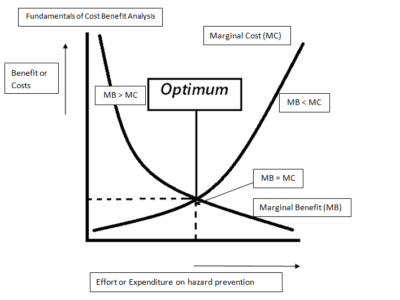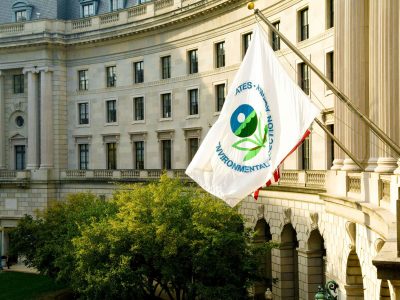Regulation
Low-Hanging Fruit
A powerful metaphor can be illuminating, but it can also be highly misleading.
The idea of long-hanging fruit is ubiquitous in environmental policy — sometimes in the form of a simple metaphor, other times expressed in more sophisticated terms as an assumption of rising marginal costs of pollution reduction. It’s an arresting metaphor, and one that can often be illuminating. But like many powerful metaphors, it can also …
Continue reading “Low-Hanging Fruit”
CONTINUE READINGEPA’s Draft Update to Its “Science Transparency Rule” Shows It Can’t Justify the Rule
EPA Cites an Inapplicable “Housekeeping Statute” to Justify Its Rule to Limit the Use of Science In Important Regulatory Decisions
Over a year ago, EPA issued a proposed rule , ostensibly to promote transparency in the use of science to inform regulation. The proposal, which mirrors failed legislation introduced multiple times in the House, has the potential to dramatically restrict EPA’s ability to rely on key scientific studies that underpin public health regulations. The rule, …
CONTINUE READINGEPA v. the Inspector General
Surprise, surprise, EPA has tried to stonewall an investigation.
EPA’s Acting Inspector General Charles J. Sheehan took the extraordinary step last week of notifying Congress that EPA was stonewalling his investigation of potential misconduct involving EPA’s Chief of Staff. This was a gutsy move for Sheehan, especially given the extra vulnerability created by his Acting status. Sheehan, it is worth noting, is a career …
Continue reading “EPA v. the Inspector General”
CONTINUE READINGWhat to Expect from Trump’s Second Term
Basically, a second term would be like Trump’s first term, but worse.
Here we are, one year from Election Day. As of now, there is a significant chance that Trump will be reelected in 2020, though experts disagree on the precise odds. In terms of the environment, what would his second term look like? The President. It’s conceivable that Trump might rethink his policy positions after reelection, …
Continue reading “What to Expect from Trump’s Second Term”
CONTINUE READINGAre You Sure That’s What You Want?
Automakers might get a federal “one national standard”…just not the one they seem interested in.
The Wall Street Journal reported today that the Trump administration will move to finalize its rollback of federal fuel economy and greenhouse gas emissions standards by the end of the year, and that, unlike the freeze previously proposed by the administration, the rule will require annual fuel economy improvements of 1.5 percent. That’s still much …
Continue reading “Are You Sure That’s What You Want?”
CONTINUE READINGToyota’s Defense of Its Choice to Support the Trump Administration’s Auto Standards Rollback Rings Hollow
Sadly, Toyota Has Ceded Its Place As the Industry’s Environmental Leader
My colleagues Ann, Cara, Julia, and Rick have all written about various aspects of the decision by General Motors, Toyota, and other automobile manufacturers to side with the Trump administration as it tries to prevent California from setting its own greenhouse gas emission standards. The administration is implementing this rollback in tandem with a federal …
CONTINUE READINGLet’s Commence an Economic Retaliation Initiative Against (Some) Automakers
Influencing Public Policy Through Individual & Collective Purchasing Decisions
At the risk of piling on, let me offer my own thoughts–and a specific proposal–regarding yesterday’s decision by General Motors, Fiat Chrysler, Toyota and the automakers’ trade organization to intervene in support of the Trump Administration in California’s recently-filed litigation challenging the feds’ attempted revocation of California’s Clean Air Act waiver. Legal Planet colleagues Ann …
Continue reading “Let’s Commence an Economic Retaliation Initiative Against (Some) Automakers”
CONTINUE READINGLet’s Get One Thing Straight
The waiver preemption lawsuit isn’t about one national fuel economy standard.
As Ann wrote yesterday, the Association of Global Automakers and the auto companies General Motors, Toyota, and Fiat Chrysler have stated their intent to intervene in pending litigation challenging the Trump administration’s rule to preempt California’s Advanced Clean Cars program, and any future tailpipe greenhouse gas (GHG) emissions standards the state and others might seek …
Continue reading “Let’s Get One Thing Straight”
CONTINUE READINGSpotlight on San Antonio
The role of transparency in municipal climate plans
Last week, San Antonio’s City Council approved its first-ever Climate Action and Adaptation Plan. This Plan’s main benefit is its ability to track and measure GHG emissions, while also signaling to City agencies, other municipalities, and the state that it is committed to climate mitigation and adaptation efforts. This is a big win for a …
Continue reading “Spotlight on San Antonio”
CONTINUE READING“If Present Trends Continue….”
To paraphrase Socrates, “the unexplained projection is not worth giving.”
You often see forecasts like this: “If present trends continue, electric vehicles will be X% of the auto fleet by 2035.” But this doesn’t mean much without explanation: what “trends” and “continued” in what way? The Energy Information Agency is a major culprit in that respect — they provide lots of projections but don’t unpack …
Continue reading ““If Present Trends Continue….””
CONTINUE READING










